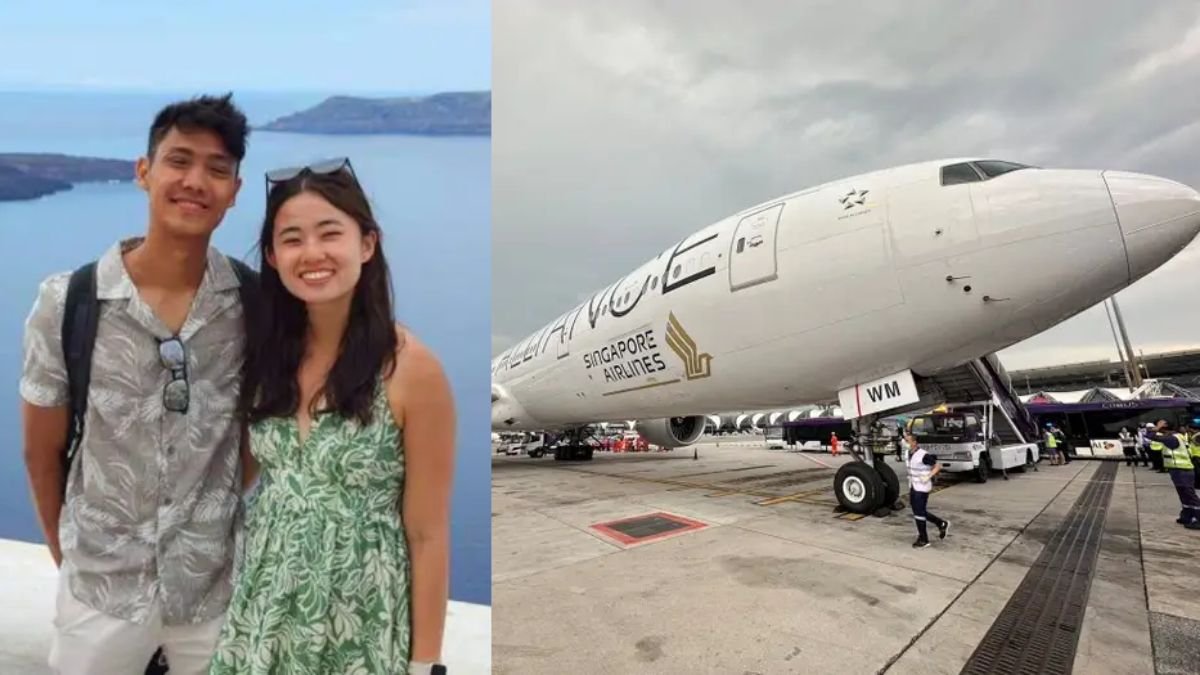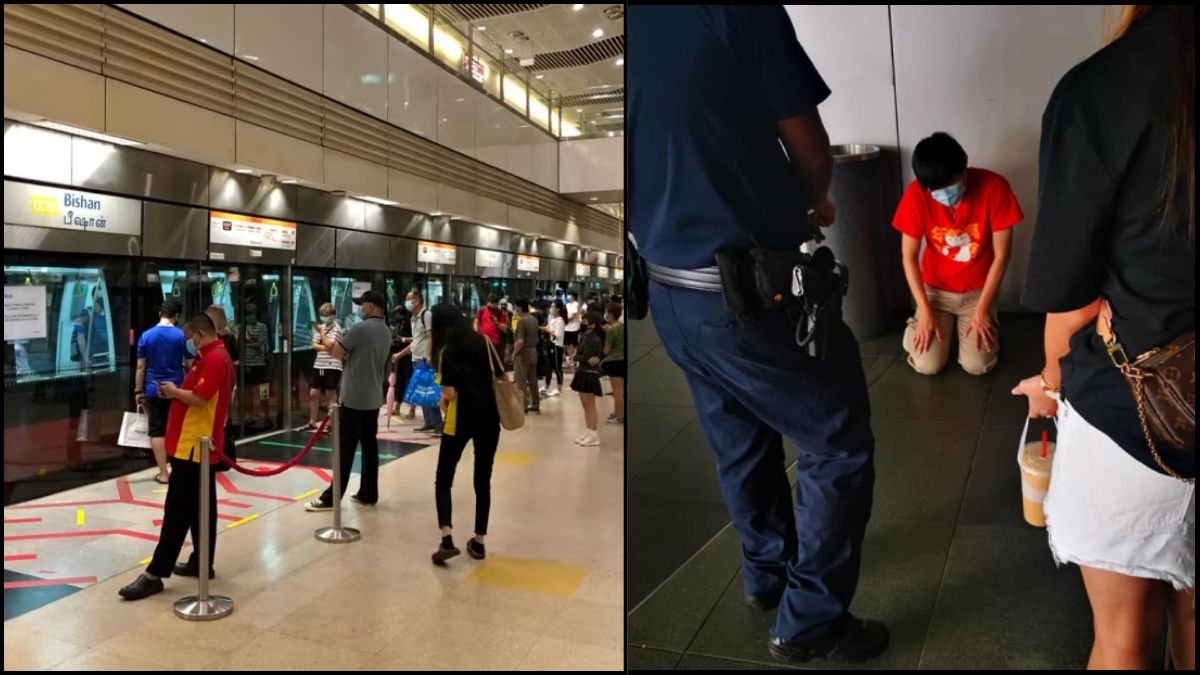When Amos Chan, a junior doctor, woke up seeing himself lying in the aisle two rows behind his seat on board his flight from London to Singapore. Soon, he realised that he must have been unconscious.
Chan and his wife Ade Tan, also a junior doctor, were returning from their honeymoon in Iceland aboard Singapore Airlines flight SQ321 on May 21 when the plane was hit by severe turbulence, killing one person and injuring dozens.
Unexpected ‘Mass Casualty’ Scenario
The couple, both 28, told This Week In Asia that they were waiting for breakfast on the plane when the horror occurred and passengers, including Chan, were thrown out from their seats.
“It was a mass casualty scenario that we were taught in school, but have never actually seen for ourselves because we rarely see such mass trauma casualties in Singapore,” Tan, who will start her residency in paediatrics in July, said.
Singapore Airlines Flight Turbulence
The Singapore Airlines Boeing 777-300ER flight from London to the city-state experienced extreme turbulence and, as Singapore’s Ministry of Transport later described, strong G-forces lasting 4.6 seconds, causing a 178-feet (54-metre) drop in altitude.
One passenger died of a suspected heart attack and at least 40 were hurt in the tragic incident following which the plane made an emergency landing in Bangkok.
Doctors Provide Emergency Aid
Tan recalls that just before the turbulence, the seat belt sign had been activated and she saw her husband fasten his seat belt. She was already wearing her seat belt.
“The next thing I knew we dropped, and he was gone from his seat,” Tan said.
“When I came to, I wasn’t in any pain, so I don’t think I passed out because I hit anything but just from the g-force,” said Chan.
He was then able to locate his wife, who was calling out to him.
Heroic Efforts By Doctor Couple on Honeymoon Amidst Chaos
“After I found him, we were more focused on how we could help. It was like a mass casualty scene. There were oxygen masks hanging, people had blood on their heads, there were a lot of people lying in the aisle moaning in pain and saying they couldn’t feel their legs,” recalled Tan.
“It was quite hectic and all of us had to assess who to attend to first,” she added.
The cabin crew called the trained medical personnel on board the plane to introduce themselves and the couple did not hesitate.
Medical Response and Aftermath
“It was an all hands on deck situation because there were so many people injured,” said Tan.
Tan stepped forward to help 73-year-old Briton Geoff Kitchen, who was unconscious after collapsing.
She recalls that two other doctors and an intensive care unit nurse attended to him while she asked passengers to perform CPR on him.
Tan helped ventilate Kitchen with a bag valve mask while another doctor focused on creating an intravenous line to administer medication. She said that selection of emergency equipment on board the plane was good.
“When we got the AED (automated external defibrillator) pads on, he was already flatlined and we proceeded with multiple cycles of resuscitation with no return of spontaneous response,” said Tan.
She said there was still slight turbulence while the group was busy attending Kitchen, forcing them to periodically grab on to the sides of seats. Authorities later said Kitchen likely died of a suspected heart attack.
“The resuscitation efforts lasted roughly 20 to 30 mins with CPR and the appropriate medications administered. Since there was no adequate response, the resuscitation was aborted half an hour prior to landing,” said Tan.
Meanwhile, in the back of the plane, Chan attended to others injured, most of which were spinal injuries. He examined the passengers, calmed them down and assured them they would soon get treatment.
Difficult Decisions and Continued Assistance
The couple returned to their seats after the announcement that the plane would land in Bangkok in 30 minutes.
Deciding whether to leave passengers with suspected spinal injuries in the aisles upon landing was a difficult decision, the couple said.
“The consideration is that if there is a spinal injury, the aim is to avoid unnecessary movement without appropriate equipment to prevent worsening any possible spinal injury. However, the other consideration in leaving the casualties on the floor should there be further turbulence or drastic drops, is that they can sustain more serious injuries,” said Tan.
After landing in Bangkok, the couple remained on the plane for about an hour and a half, as Thai medical staff prioritized treating the ones with the most serious injuries.
Post-Traumatic Stress and Healing
Only then did Tan feel pain in her neck and was later diagnosed with a spinal fracture, but it did not require surgery.
“I didn’t really register what kind of pain I was in because we were just in an adrenaline rush, task-oriented mode,” she explained.
The couple returned to the city-state aboard the relief flight organised by Singapore Airlines on May 22.
On the way back from Changi Airport, they were taken to the emergency room at Tan Tock Seng Hospital, where Chan spent a day in the hospital due to a concussion and Tan spent a week in the hospital.
They had planned to travel to the United States for the remainder of their honeymoon but postponed the trip because Tan is still wearing a neck brace and is not fit to fly.
While Chan said the incident did not stop her from flying again in the future, Tan said there were slight tremors on the return flight from Bangkok that brought them “back to the incident”.
On Thursday, Singapore Airlines said 38 passengers who were on board SQ321 are still in Bangkok. This includes 25 passengers receiving in-hospital medical treatment.
ALSO READ: Singapore Airlines Flight Tragedy- What Is Clear-Air Turbulence And How Is It Caused?




